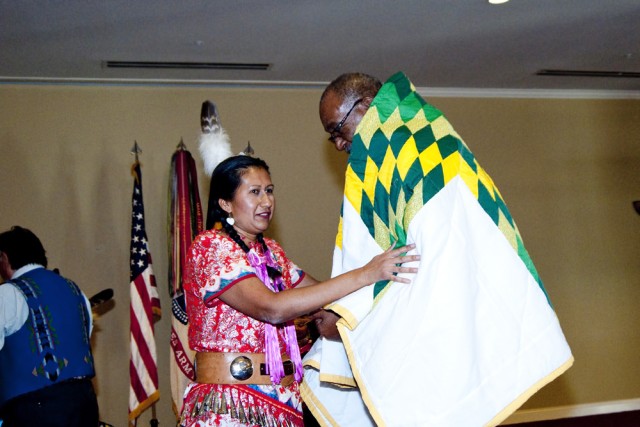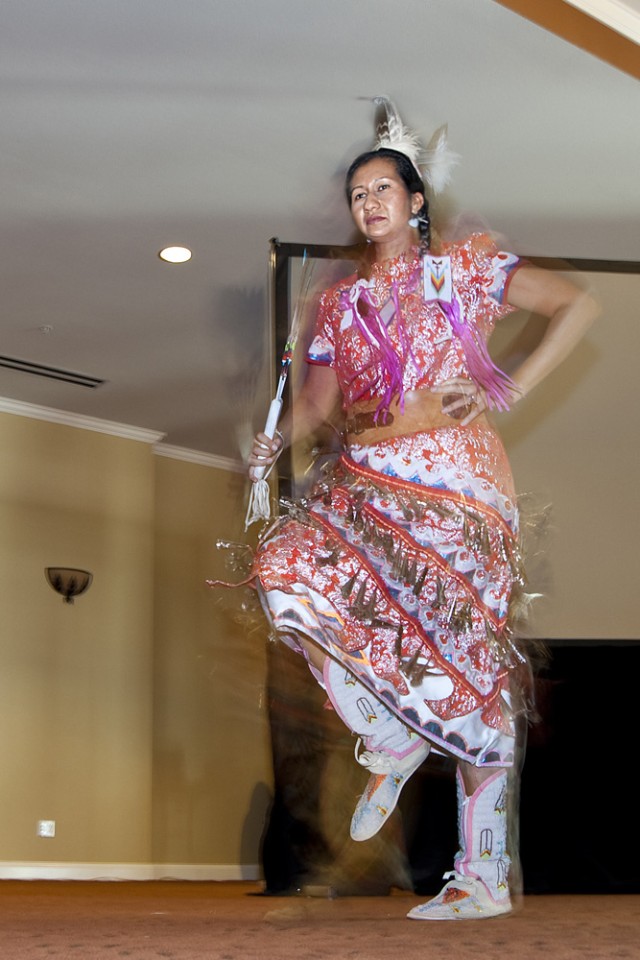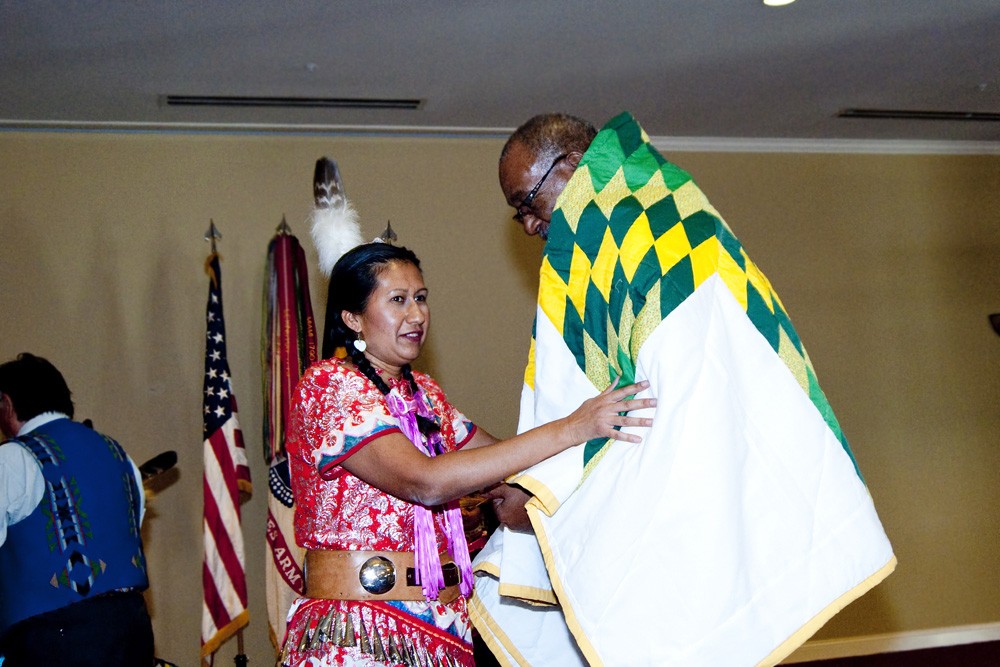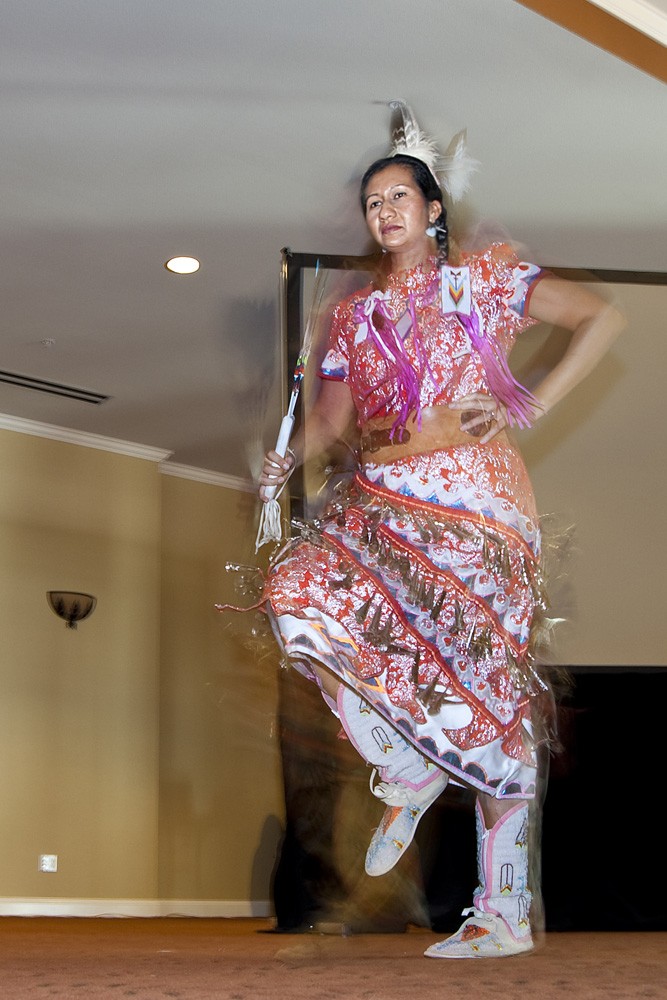FORT IRWIN, Calif.- As the dancers from Red Boy Productions kept in step with the steady beats from the tribal drum and songs sung in the tongues of Native American Indian tribes, Lupe Lopez from the Apache Nation told the Soldiers and civilians gathered for the National Training Center Fort Irwin's Native American Heritage Month celebration how the dance has helped her son.
The event was sponsored by the 916th Support Brigade on Tuesday.
"My son is Attention Deficit/Hyperactive Disorder, and this is his medicine," Ms. Lopez said. "This drum beat from Mother Earth is his medicine."
Both the tribal medicine man and doctors are in agreement that dancing is her son, Eagle Boy's, medicine, she said, noting that he isn't taking any prescription medicines for his AD/HD.
After telling about her son and his healing, Ms. Lopez danced the Jingle Dance in a jingle dress, which has 265 cones, guest speaker John Dawson, also a member of the Apache Nation, explained, adding that until the 1970s and 1980s the dance was only danced in the Great Lakes region.
"I was raised in a wickiup with nothing modern," Dawson said. "We didn't have any running water. We didn't have any electricity."
He and his grandparents had to go down to the river and get water and take baths, he said.
"My first language was the language of my people, the Apache people," he explained. "You might say I was a little bit of a foreigner within my own country, within my own village."
As he grew up, Dawson said he learned more about his people, the Twisted Rock clan of the Apache tribe, and came to appreciate it.
"My grandfather told us, 'You may know your tribe, you may know your language, you may know your people, but always remember that this is a white man's world,'" he said. "'Always remember you must go among them and you must learn to also be one of them. You may not look like them but you are as strong, as intelligent as anyone on this earth.'"
Those who were put on the reservations are fortunate in that they were able to preserve their tribal cultures, he said.
When he went to Catholic parochial boarding school, Dawson said he and many of his friends had to ask the older students for help in understanding the English language, because they didn't speak it on the reservation.
"It took us many months to go from knowing the Apache language to knowing the English language," he said. "It was very difficult."
During the 1950s, many Native Americans began moving into the large cities across the nation as part of the federal government's relocation program, which led to the creation of what are now known as pow wows, which allow different tribes to share their diverse cultures, he said.
"In spite of my culture, my differences between where I come from, who I am and still I think I fit into the mainstream society," Dawson said. "I'm able to participate in many of the school programs and I go to the schools and talk to the students because I feel it's very important to share my culture."
As the Red Boy Productions dancers finished their dances, Ms. Lopez asked Fort Irwin/NTC Equal Employment Opportunity director John Winkfield to stand as she presented him with a quilt made by the Olalla Sioux tribe in North Dakota.
"Thank you, John Winkfield, for bringing us here and making sure Native American Heritage Month is in each calendar year," Ms. Lopez said, inviting the entire audience to thank Mr. Winkfield for his efforts as the dancers and singers sang a song of honor for him.




Social Sharing